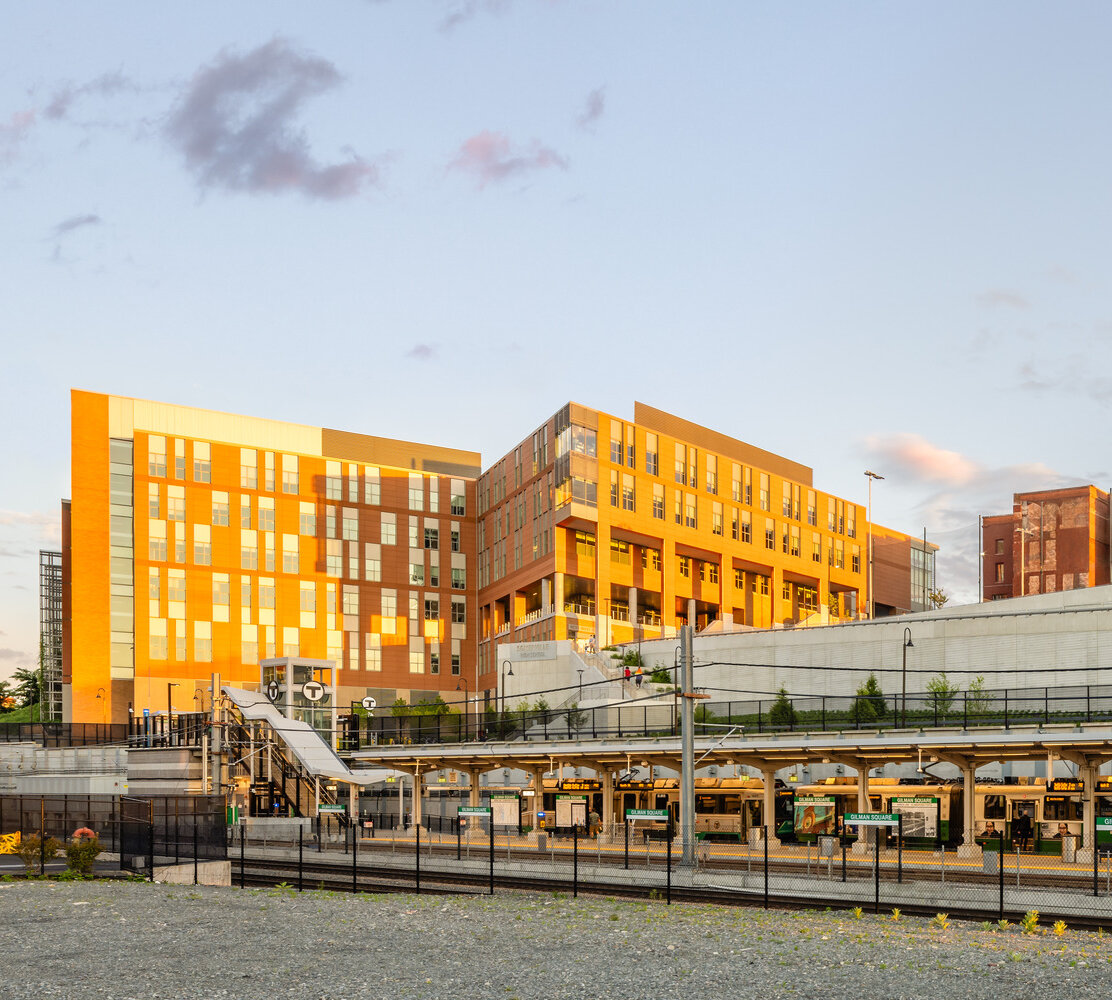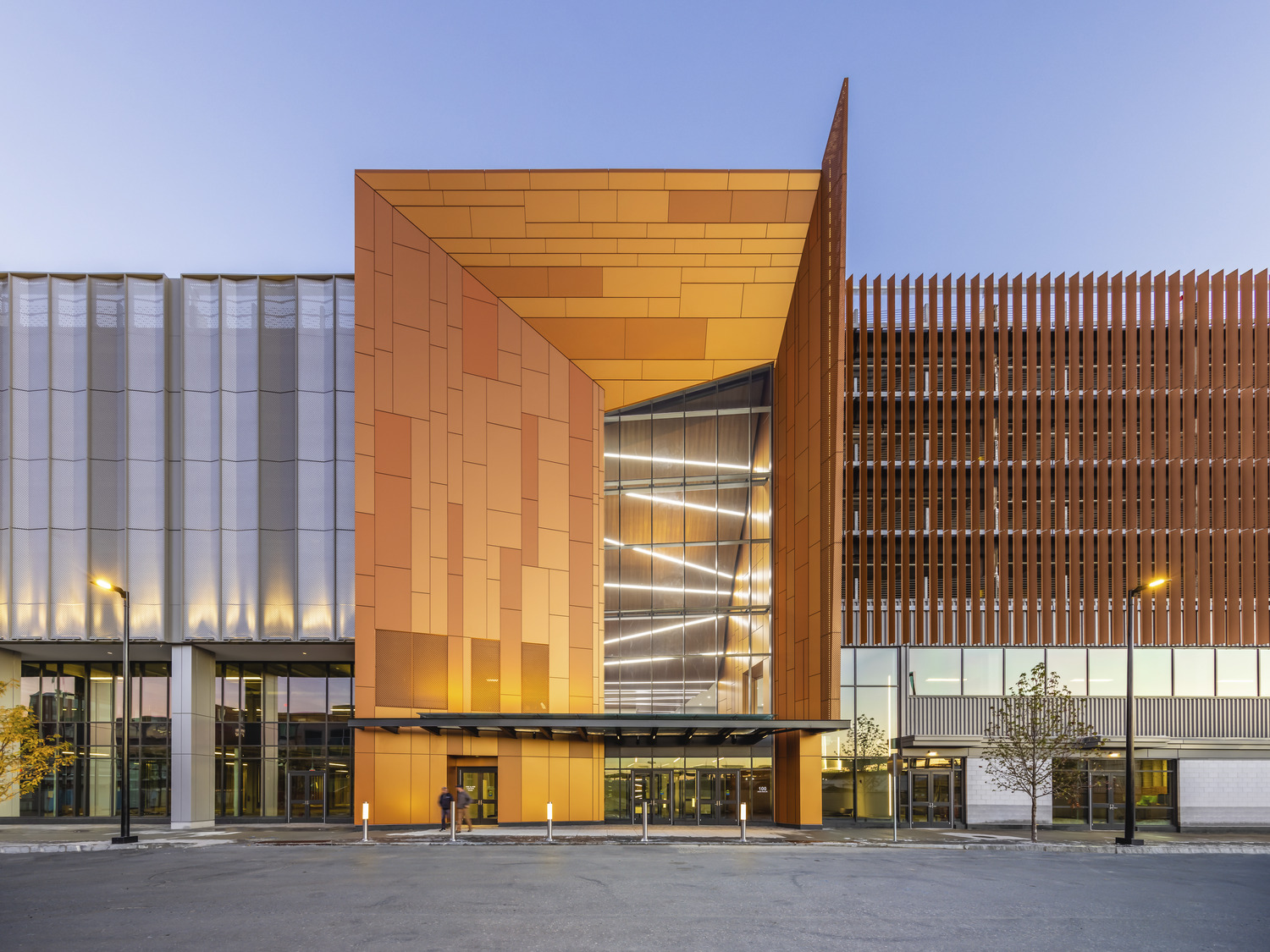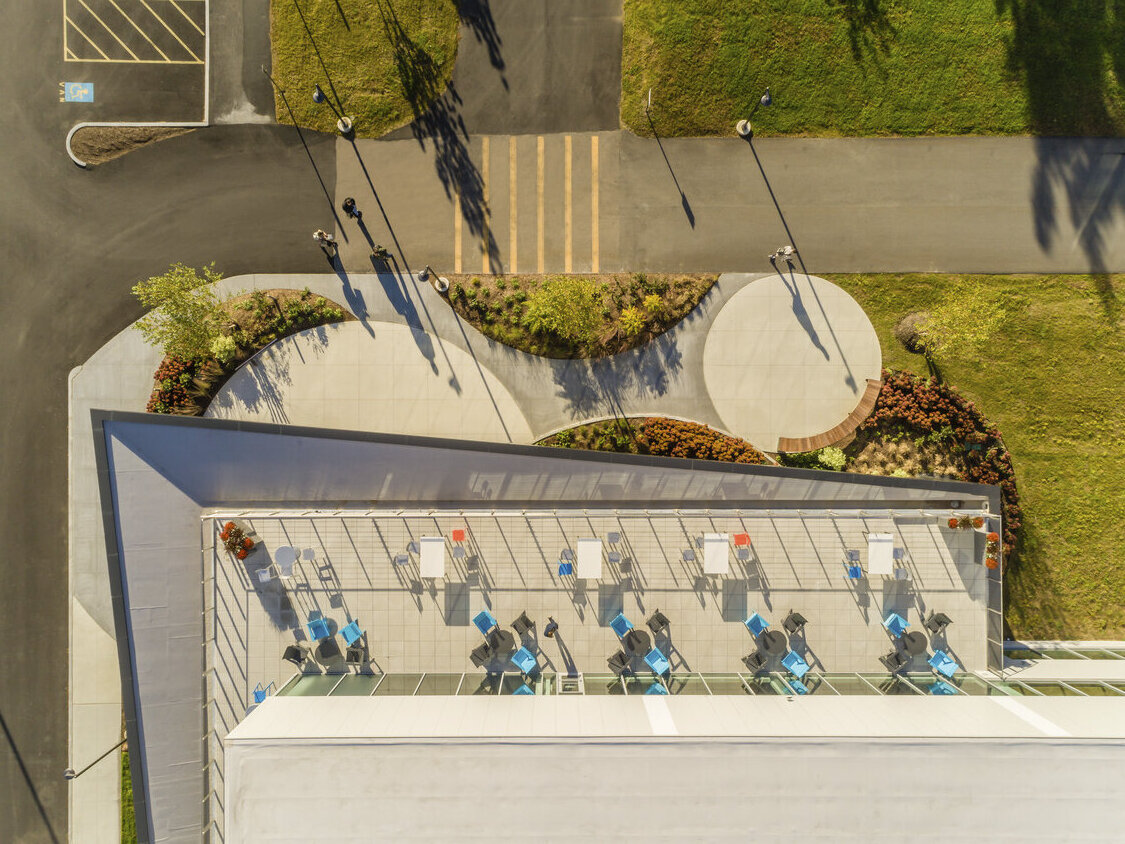
Landscape architects and designers play a key role in shaping both the built environment and the end-user experience. Professionals must consider a host of factors: safety, aesthetics, site functionality, accessibility, and more.
“We live in a car-driven society, so it’s our job to be mindful and prioritize our pedestrians and cyclists. This is especially true within the context of sustainability and multi-transit societies.”
Laura Monies, Senior Landscape Architect and Planner
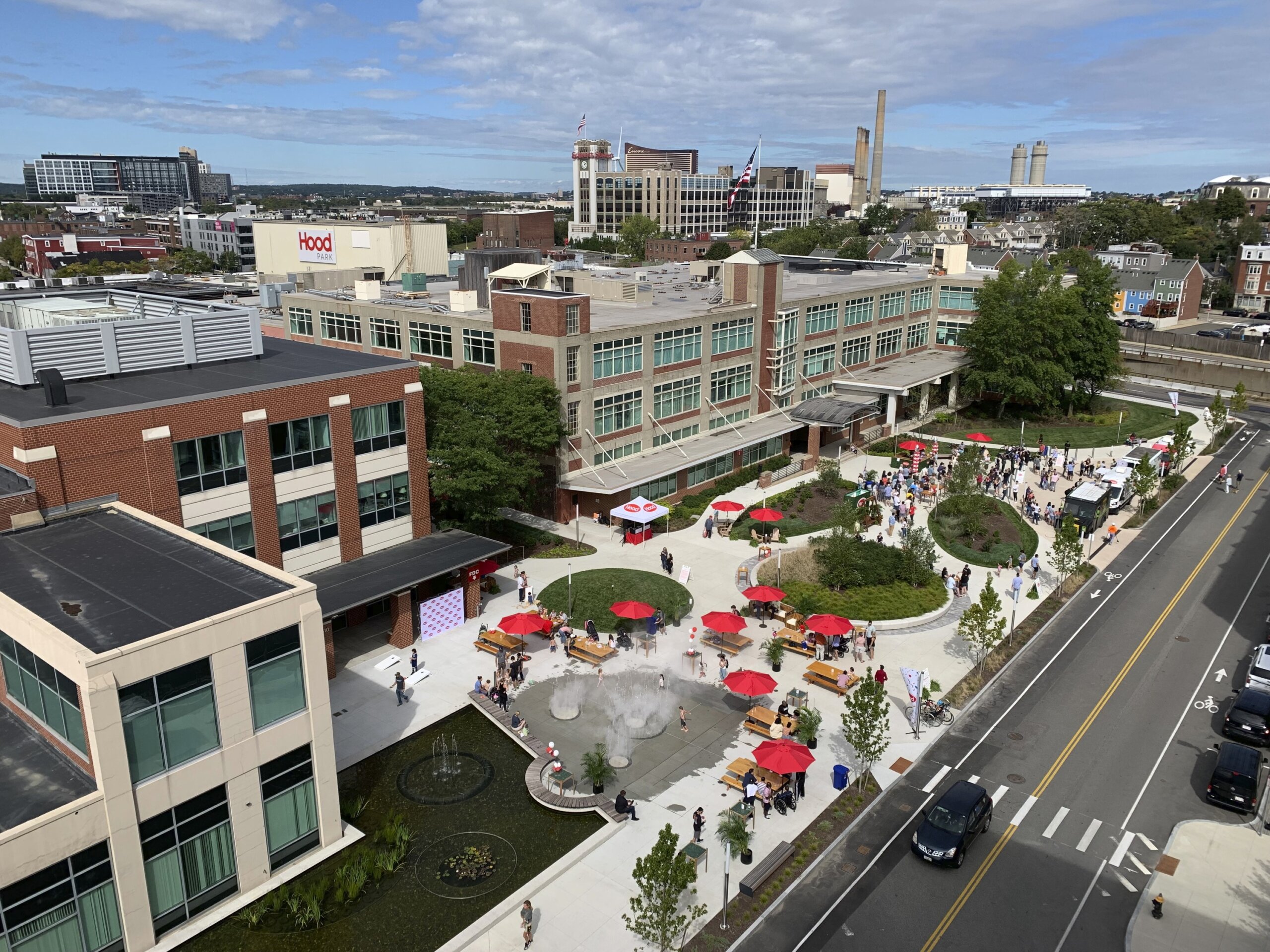
Improving safety is one of the profession’s main focuses.
In every design project, landscape architects work to separate pedestrians and vehicles through subtle and more visible measures.
“There are a lot of things we can do with site layout and design to positively impact safety and wayfinding. We can promote variable widths in pedestrian and vehicular ways to accommodate differing volumes and types of traffic."
"We can align pedestrian ways with focal points and destinations to provide a strong sense of direction. And we can develop clear and consistent material palettes and proper signage to improve pedestrian wayfinding.”
Erik Vangsness, Senior Landscape Architect
A safety-first design approach starts with determining travel routes and methods.
This enables landscape architects to identify critical corridors, gathering spaces, and access points to ensure safe, universally accessible travel routes within a site.
“We should incorporate accessibility because we want to, not because the regulations require us to,” says Vangsness. “Along each corridor, we can take pedestrians on a sequence of experiences that progress from one place to another. We can vary edge conditions, light levels, overhead canopies, and other environmental factors to achieve a certain response from both vehicles and pedestrians. We can also strategically incorporate elements such as crosswalks, where pedestrians, cyclists, vehicles, and other forms of traffic can safely interact.”
Somerville High School
View Project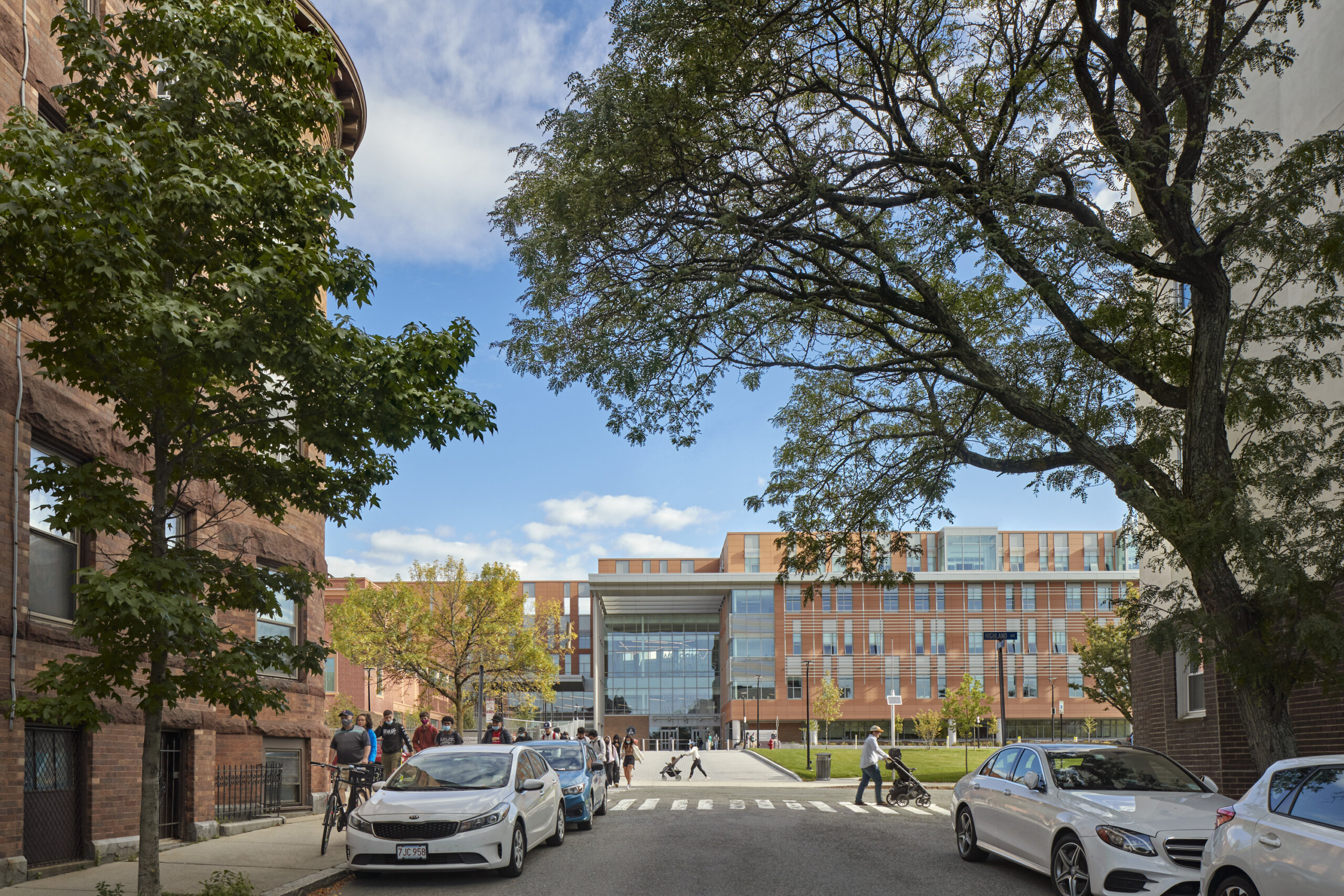
“We also use material cues to help manage pedestrian and vehicular corridors,” says Monies. “As a society, we’re used to seeing asphalt and curbing to indicate a roadway, with other materials suggesting pedestrian space. When we have vehicular areas that are intended primarily for pedestrians, like at Somerville High School (above), elements such as bollards, greenery, and other visual cues can reinforce that drivers are passing through a pedestrian space, as opposed to pedestrians walking through a vehicular space."
“We want to use design to slow people down and to encourage the use of safer, alternative modes of transportation,” says Vangsness. “We want motorists to feel like they’ve arrived at a place filled with activity, not just that they’re passing through it. This approach will hopefully result in reduced vehicle speeds, greater awareness, and safer conditions for all.”
Providence College School of Business
View Project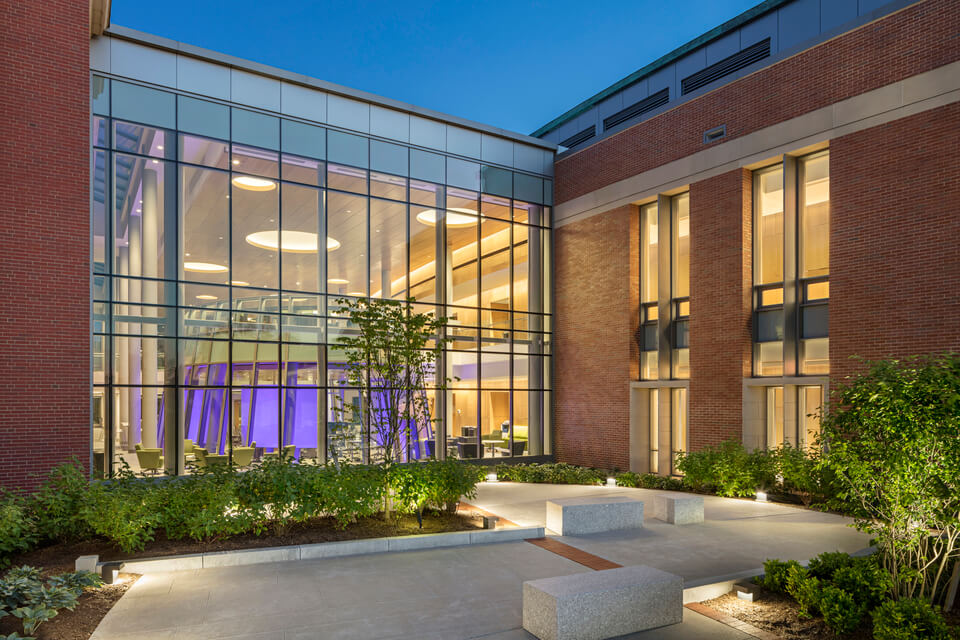
Landscape architects can connect outdoor destinations with the indoor environment.
At SMMA, this effort often includes collaboration with the firm’s civil engineers and interior designers. Landscape architects identify design themes, geometries, and materials used in the building to select materials that complement those patterns outside.
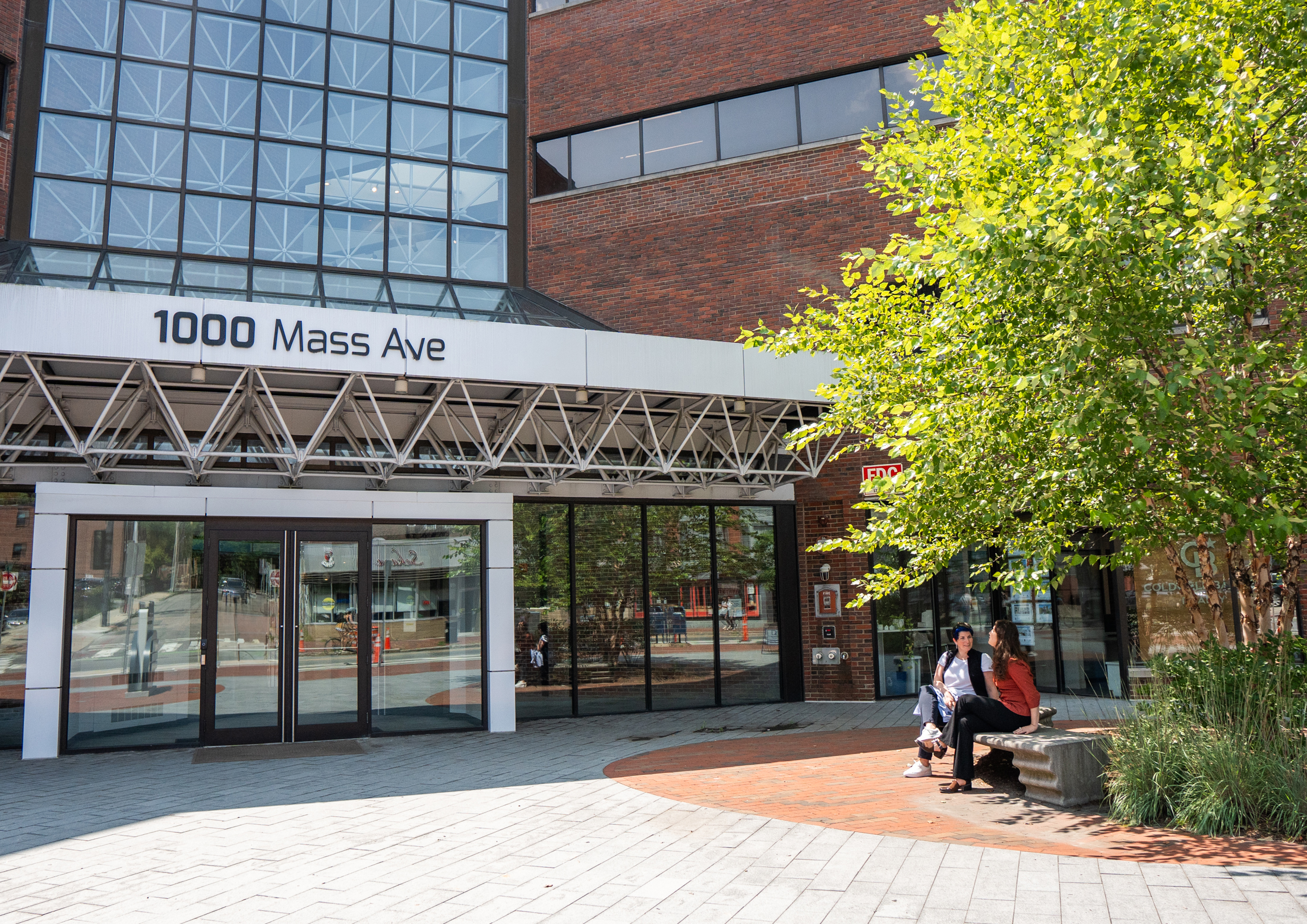
Landscape architects had the opportunity to refresh 1000 Massachusetts Avenue’s outdoor plaza and patio while interior designers created a lobby that was both inviting and inspired interaction, taking cues from the building’s neighbors at Harvard and MIT.
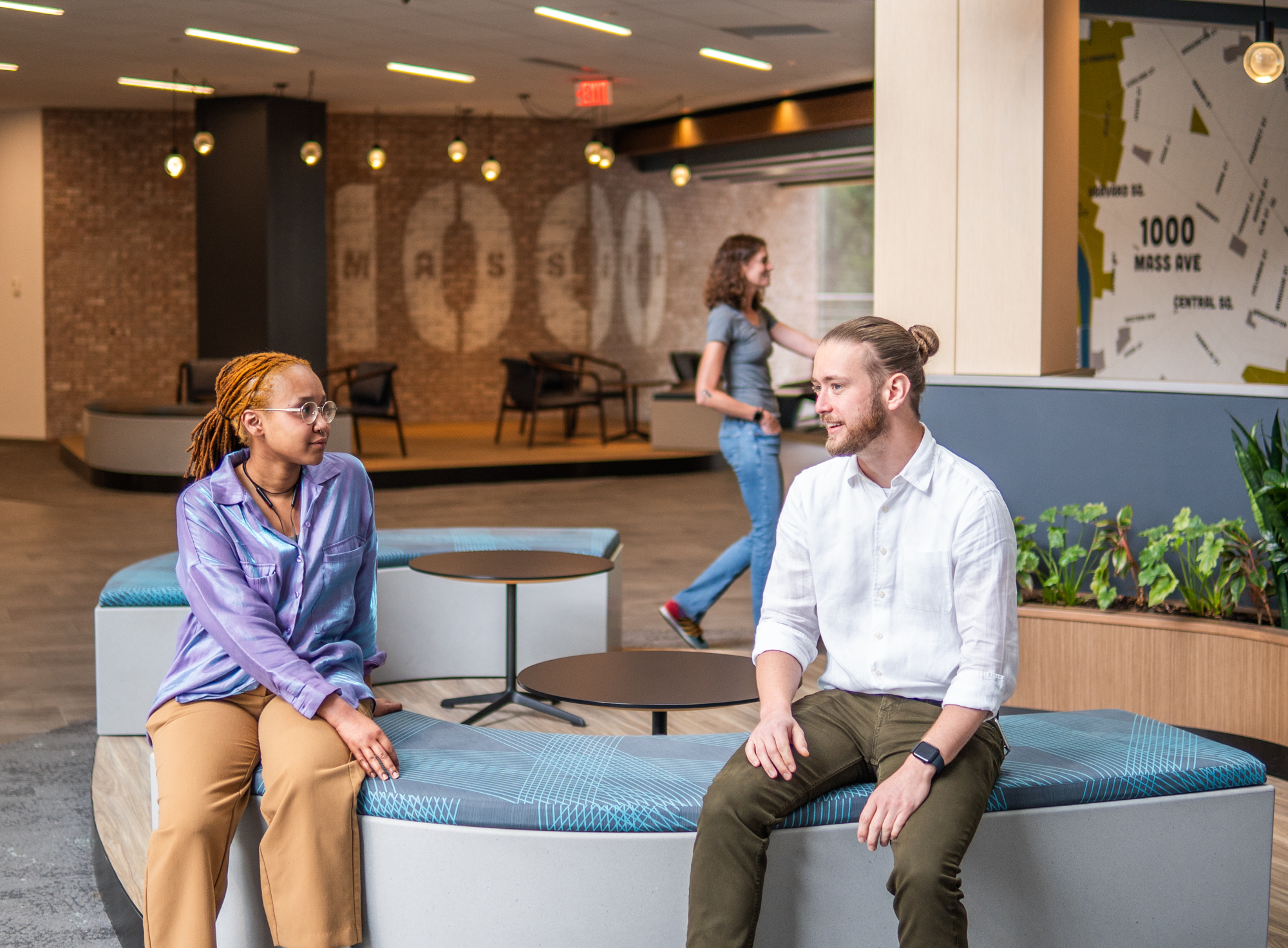
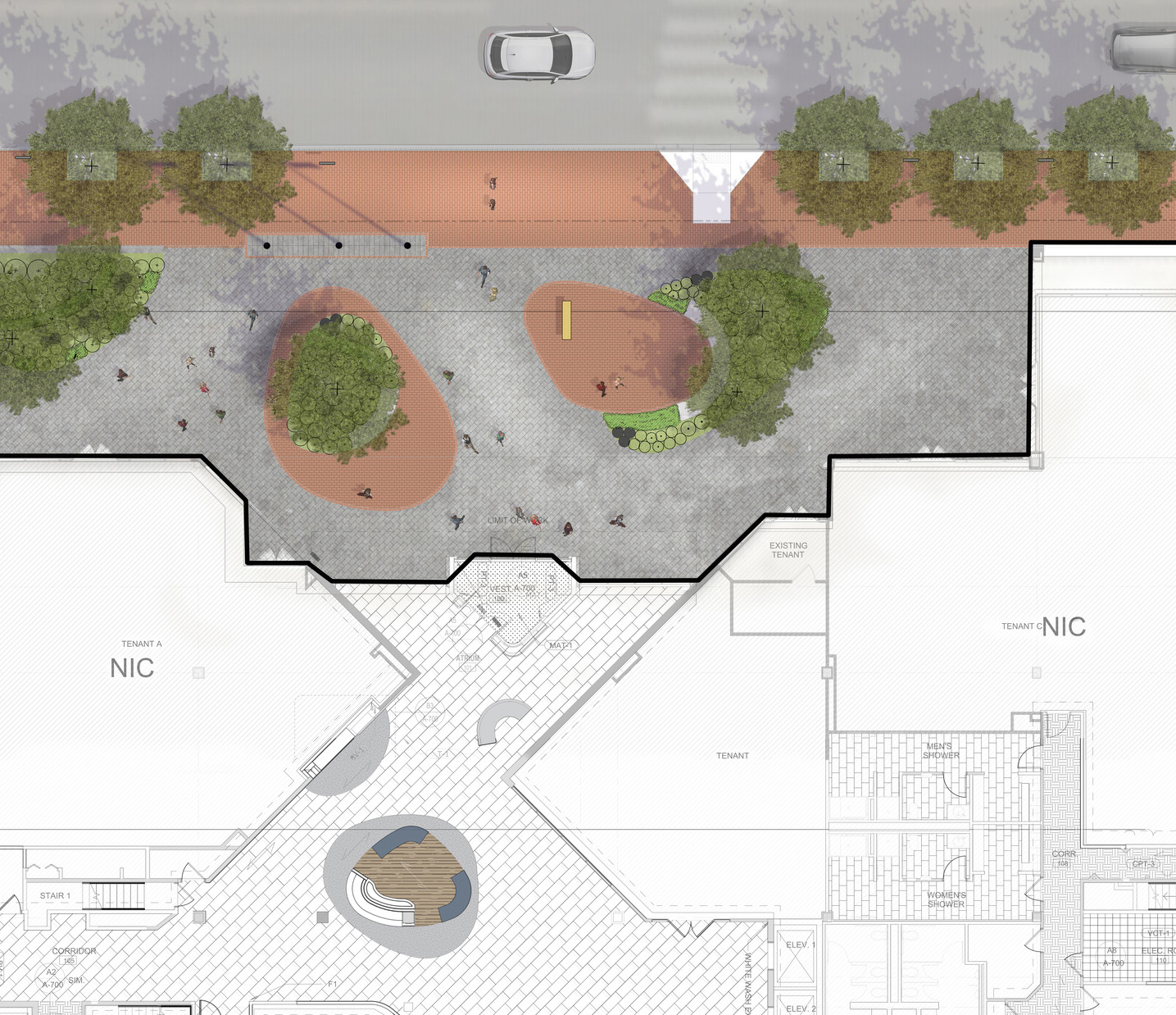
The new floor tiling in the building’s lobby is mimicked in shape and color in its outdoor spaces. Additionally, the grouping and styling of furniture in the lobby work cohesively with the outdoor terrace and plaza, creating a visual connection between the natural environment and the interior.
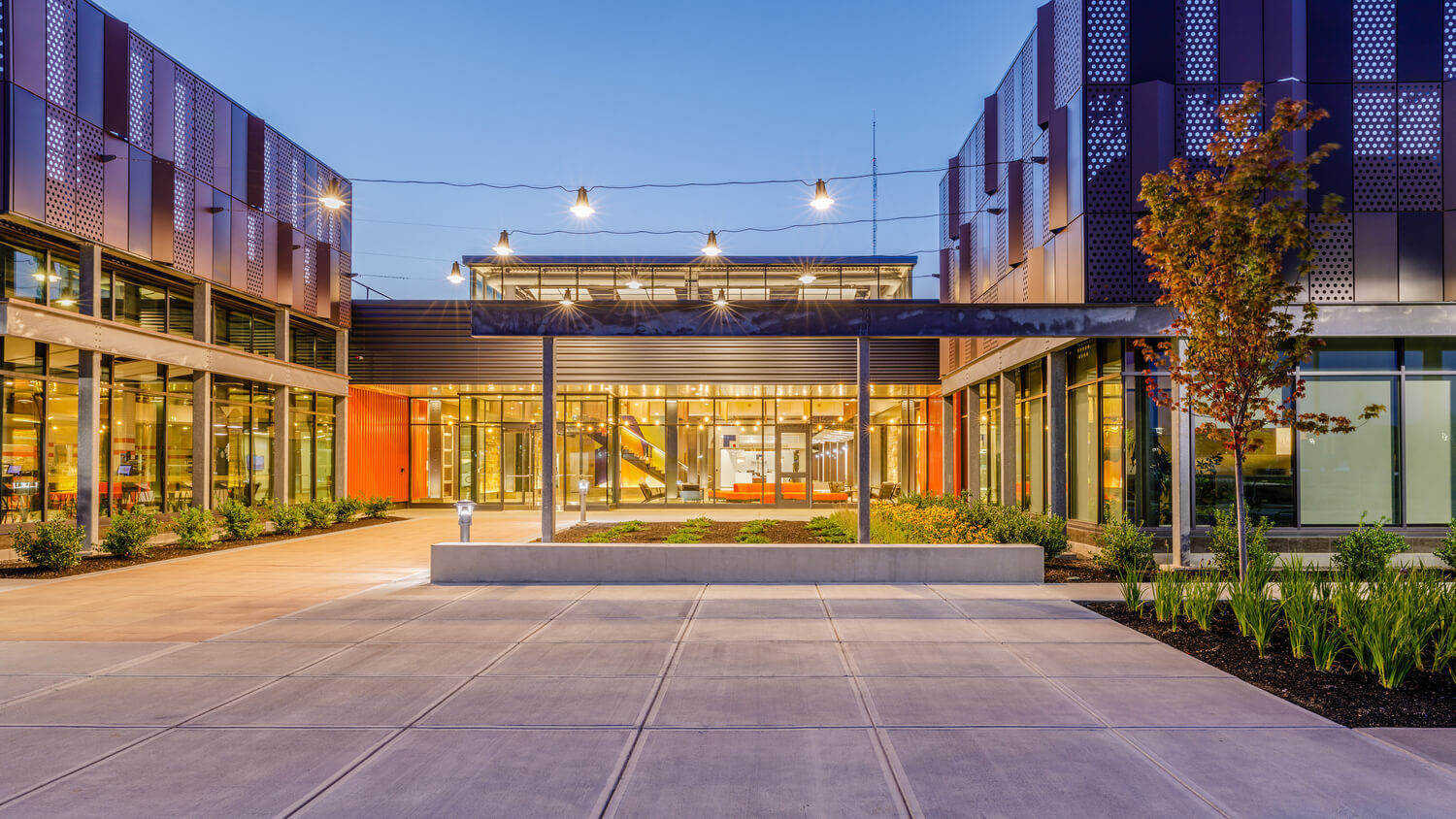
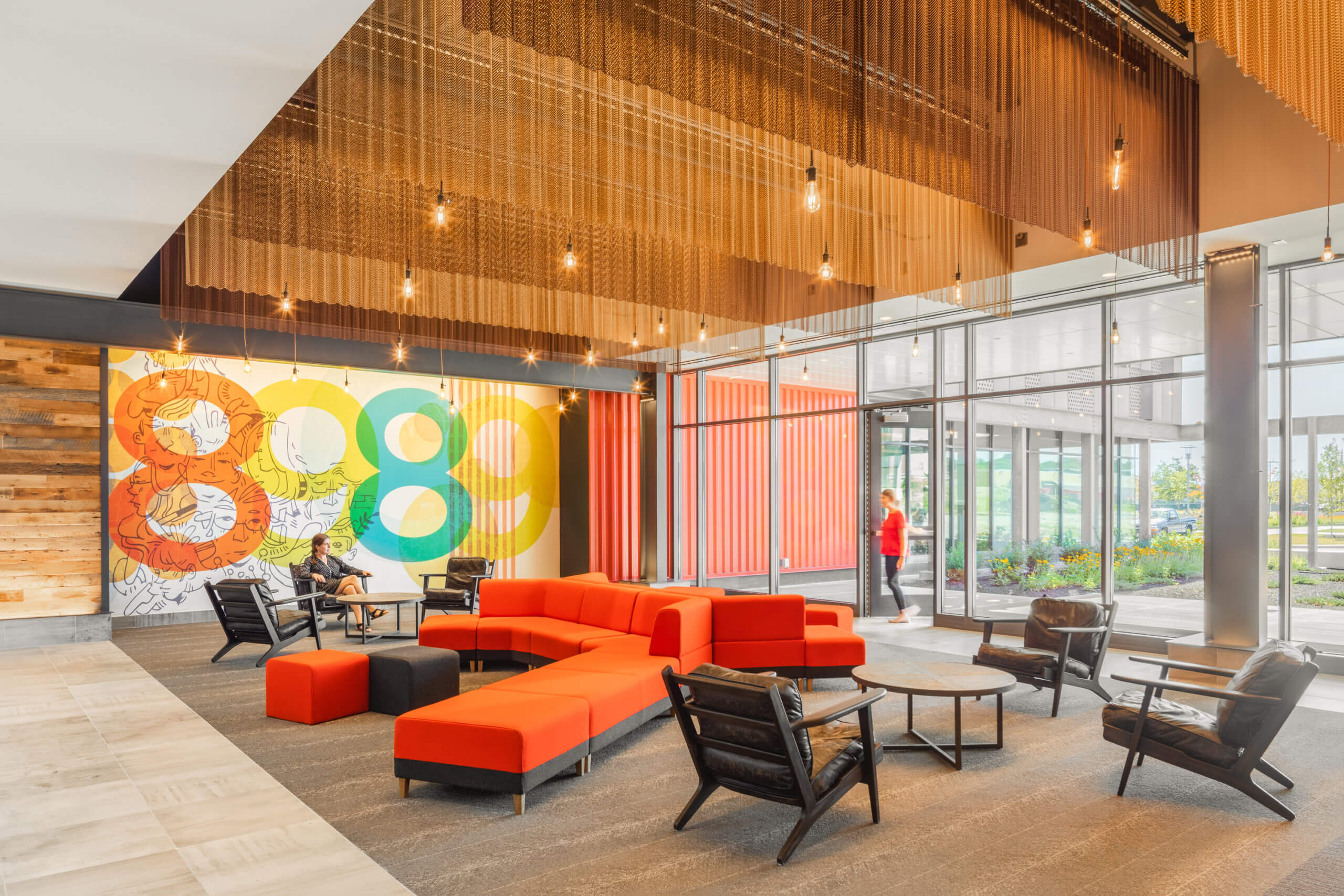
Founders Park is a mixed-use development situated along Boston’s technology corridor and busiest motorway. Landscape architects implemented two interior courtyards and outdoor patios to provide employees with a place of respite, encouraging them to engage with the natural world.
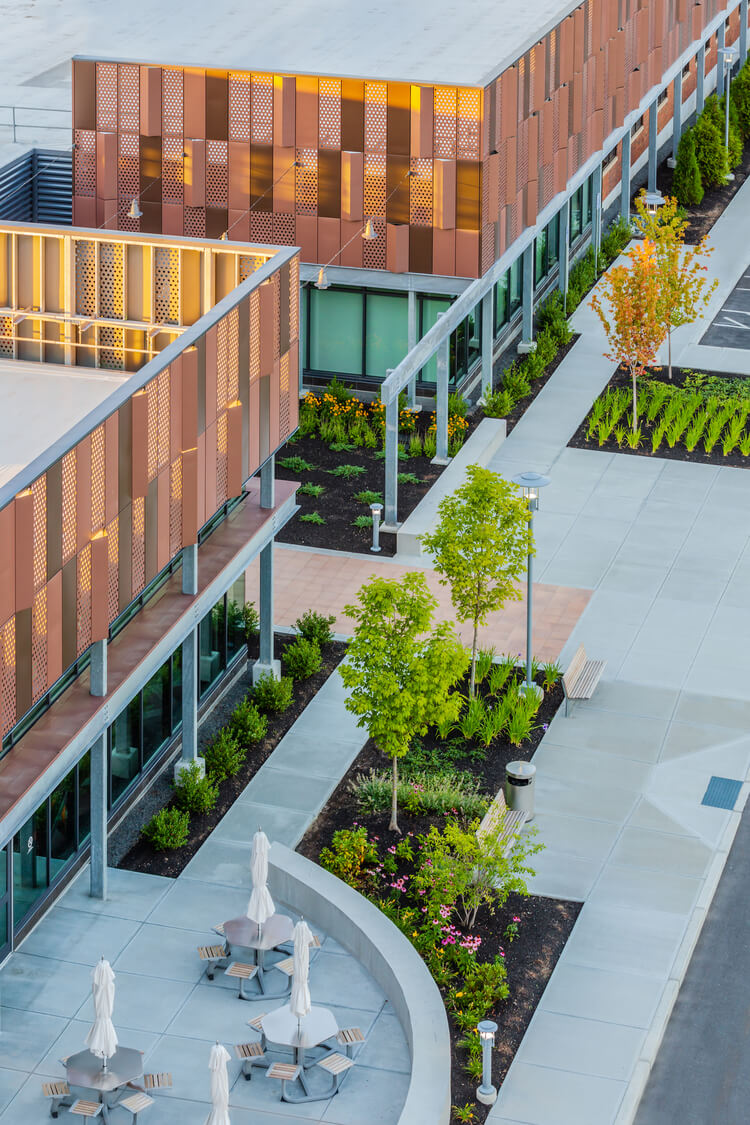
They created soft landscapes by making use of spring plantings, alongside incorporating Asian-inspired rock gardens and elements of feng shui.
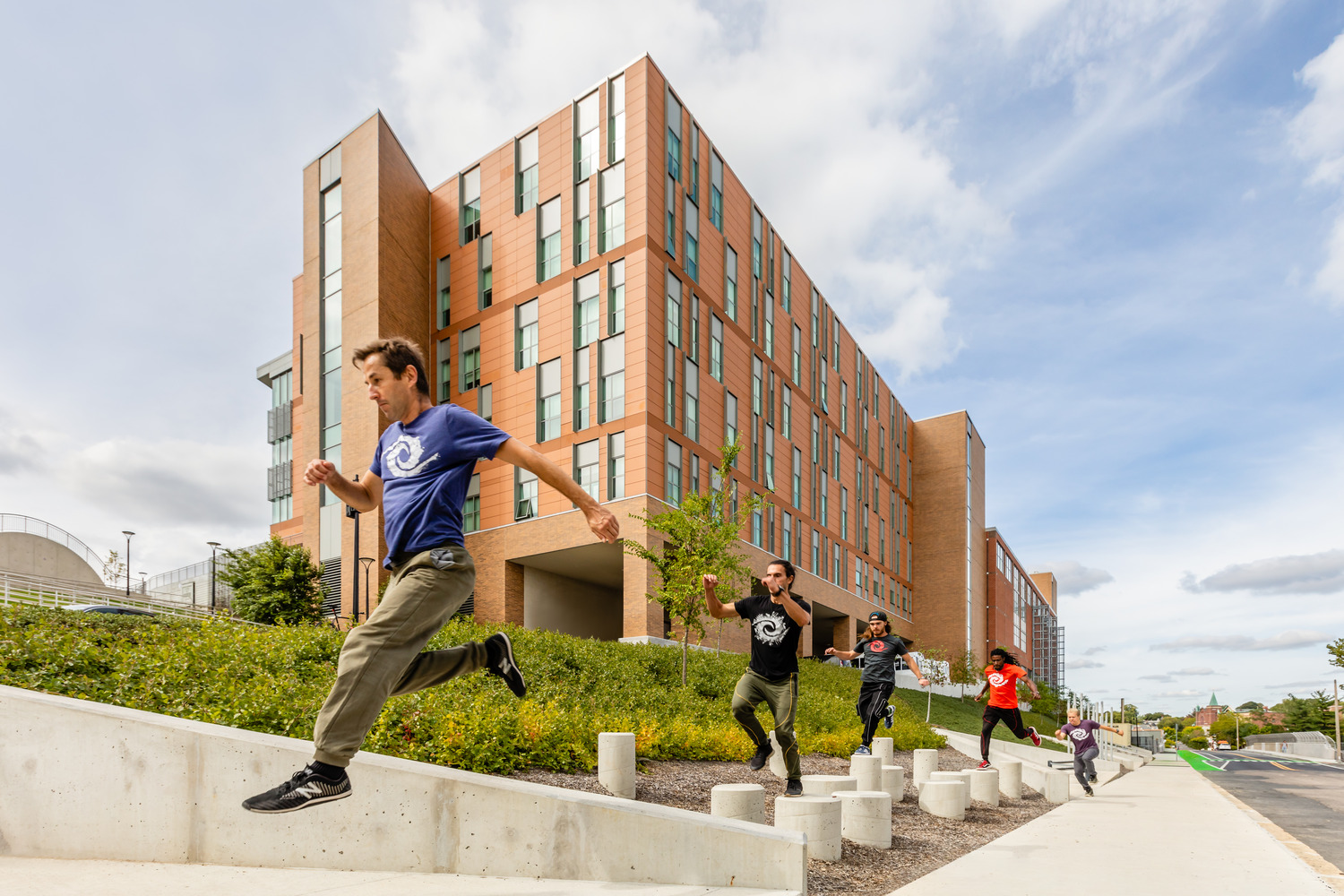
SMMA’s design for Somerville High School includes a parkour course. To the right is a public bike and pedestrian path that connects the school to the MBTA’s new Green Line Extension.
